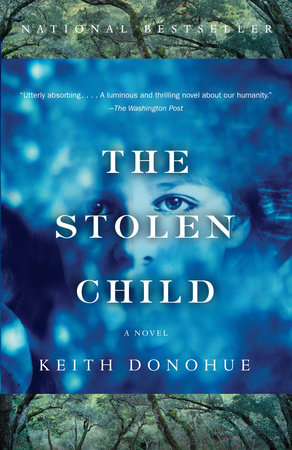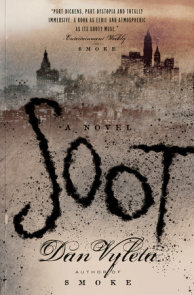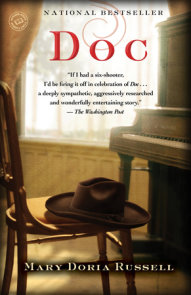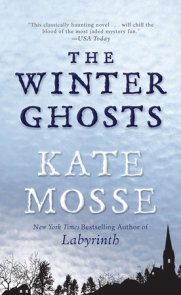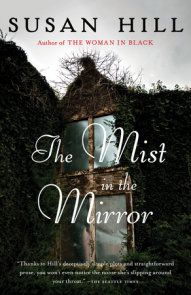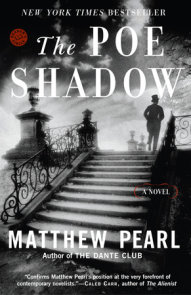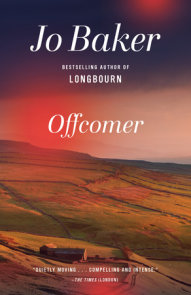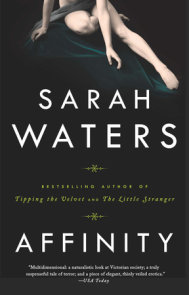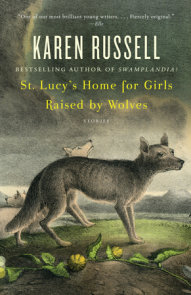TEACHING GUIDE
NOTE TO TEACHERS
The Stolen Child tells the tale of a boy who is taken from his family by a group of changelings, wild children who never grow up and who live in the depths of the woods. He loses his identity and eventually becomes a part of this wild tribe. In turn, one of these magical children takes his place and assumes his human life. Both the human child and the changeling struggle with their new lives and desperately try to remember the ones they left behind. The novel is a story of childhood, of growing up, and of determining an identity.
About This Book
The Stolen Child is structured like a fairy tale about two boys, Henry Day and Aniday, one a child growing up, the other trapped as a child eternally. Each boy must try to figure out his place in the world by examining his past, navigating his present, and determining a direction for his future.
One night, seven-year-old Henry Day runs away from home and is stolen by a tribe of changelings, “boys and girls stuck in time, ageless, feral as a pack of wild dogs” (p. 15). He is given a new name, Aniday. After his initial horror fades, he learns to live among them in the woods and eventually becomes a member of this strange and magical community of “ancients in wild children’s bodies.” Like those who stole him, Aniday’s body will never age. As the years pass and he grows increasingly distant from his former life, Aniday desperately tries to hold on to whatever he can remember about who he once was so that he can determine who he will become.
His life among the fairies takes a different turn after he receives a gift of paper and pencil from another changeling. With these writing tools, Aniday begins to record his memories, his thoughts, and what he learns from the other fairies. As he explains, without this gift, he “would have been lost forever.”
The changeling who takes his place assumes the name of the stolen child, Henry Day. The changelings choose a child who is withdrawn and disillusioned, “attuned to the weeping troubles of this world.” They learn everything they can about the child through covert yet close observation. Finally, they replicate the child’s physical appearance, “First, start with the bones and skin, stretching until one shudders and nearly snaps into the right size and body shape” (p. 4). This “double” or rather the new Henry, however, differs from the stolen child in many ways. Most important, he is a gifted musician. As with Aniday and his writing, Henry will use his musical ability to express himself and use it as a clue to figure out his true self. Henry has many lives with which to contend–his life as a child before he was stolen, his life as a changeling, and his new life as Henry Day. He must examine all of these lives to determine a new one.
While The Stolen Child is a classic coming-of-age story, it is also about love, the importance of memory, and the transformative power of art.
About the Author
Keith Donohue lives in Maryland, near Washington, D.C. He is currently the Director of Communications for the National Historical Publications and Records Commission, the grant-making arm of the U.S. National Archives. Until 1998, he worked at the National Endowment for the Arts and wrote speeches for chairmen John Frohnmayer and Jane Alexander. He has ghostwritten articles for The New York Times, The Washington Post, The Atlanta Journal-Constitution, and several other papers. Donohue holds a Ph.D. in English from the Catholic University of America. The Stolen Child is his first novel.
TEACHING IDEAS
Preparing to Read
The questions and discussion points that follow are intended to guide your students through The Stolen Child. Following is a description of the changeling myth, questions regarding literary genre and narrative structure, as well as questions regarding the important characters and themes in the novel. The Stolen Child references several works of literature, including the poem from which the novel is named, W.B. Yeats’s “The Stolen Child.” The guide includes questions about these poems and how their themes are echoed in the novel. In conclusion, there is a list of additional books for further study that involve similar ideas, narrative structures, or fantastical elements.
The Changeling Myth
The changeling myth says that a fairy, hobgoblin, or other magical creature takes the place of a human child. In the words of the changeling who takes Henry Day’s place in the novel, “We kidnap a human child and replace him or her with one of our own. The hobgoblin becomes the child, and the child becomes a hobgoblin” (p. 3).
Fairies, changelings, hobgoblins, and other subhuman creatures exist in folklore around the world, and perhaps the most comprehensive place to begin learning about them is D.L. Ashilman’s Folklinks (http://www.pitt.edu/~dash/folklinks.html). Dr. Ashilman’s site includes a section on the changeling legend with links to electronic text versions of tales from Great Britain, Ireland, Germany, and Scandinavia. In addition, Terri Windling of The Endicott Studios takes a long and loving look at the changeling legend and even features the refrain from Yeats’s poem (http://www.endicott-studio.com/jMA0301/changelings.html).
William Butler Yeats wrote a wonderful yet sad poem called “The Stolen Child” in the 1890s. His premise was that the fairies could entice a child from his or her home to their hidden land, and that, furthermore, the child would be better off among the waters and the wild, far away from a human world “more full of weeping than you can understand.” Changelings appear in numerous other literary works. In Shakespeare’s A Midsummer Night’s Dream in which the changeling boy is prized by both the fairy queen Titania who “never had so sweet a changeling” to the fairy king Oberon who says to her “I do but beg a little changeling boy/to be my henchman.” Other examples of the stolen child can be found in Thomas Middleton’s play The Changeling (1622), John Galt’s novel The Stolen Child (1833), and in scores of other works including contemporary novels and film.
The book also incorporates the cultural and sociological significance of the changeling legend. In her book Mother Nature: Maternal Instincts and How They Shape the Human Species (Ballantine, 2000), Dr. Sarah Hrdy digs at the roots of the changeling story from a social-anthropological standpoint. She writes about the practice in medieval times of parents abandoning babies with obvious birth defects and how they justified their infanticide by conjuring up an elaborate theological explanation that their “normal” child had somehow been replaced by this devilish creature in the cradle. As a result, the folktales and legends involving changelings became increasingly prevalent in Western Europe.
DISCUSSION AND WRITING
Structure, Technique, and Plot
Fairy Tale
1.In an interview about the book, the author, Keith Donohue, explains that the world is filled with such an overwhelming amount of information mediated through television, the Internet, and advertising, that people have lost the ability to stop and recognize the beauty and wonder in the world around them. “It’s not so much the disappearance of myth, or religion, or art, but our diminished sensibility to want or need those stories and images to create meaning in our lives. Our lack of enchantment. That’s why I wrote it as a fairy tale for adults for the subversive uses of enchantment.” What does the author mean when he says that we lack “enchantment”? In what way does the The Stolen Child use enchantment and why is it subversive?
2.Most fairy tales have a moral. If The Stolen Child is a fairy tale, what is the moral of the story?
3.At one point in the novel, Aniday explains, “My life with the faeries is more real to me than my life as Henry Day. And I wrote it down to show that we are more than a myth, a tale for children, a nightmare or daydream. Just as we need their stories to exist, so do the humans need us to give shape to their lives” (p. 294). Why do we need the stories of fairies to give shape to our lives?
4.By writing the story as a fairy tale, how has the author been able to explore themes in a different way than he would have in a more realistic, straightforward narrative?
Bildungsroman
1.In addition to reading the story as a fairy tale, the novel could also be read as a bildungsroman, a traditional form of the novel that follows the intellectual and moral development of a character, usually a boy, as he discovers and defines his place in the world and becomes an adult. How does this narrative form apply to The Stolen Child?
2.How is childhood portrayed in the novel? Read the first chapter in Aniday’s story closely and discuss his first impressions of the changelings. They are children, yet Aniday describes them as “ancients in wild children’s bodies” (p. 15). What does it mean to grow up in this novel? While this process is more obvious for Henry who now lives in the human world, what does it mean for Aniday to mature when he is essentially trapped in an eternal childhood?
3.How do Henry’s views on childhood change throughout the book? Note toward the end of the book that Henry imagines the changelings are trying to steal his son, all children suddenly appear sinister to him, “All children, except my own boy, became slightly suspect. They can be devious creatures. Behind every child’s bright eyes exists a hidden universe” (p. 266).
4.Childhood is often associated with innocence, but is anyone truly “innocent” in the novel?
Narrative Structure
1.The Stolen Child is told in alternating narratives beginning with Henry’s story. Why use this particular narrative structure? How does it help the author tell his story? What is he able to reveal by having two protagonists?
2.Initially, the two stories echo the other, but as the novel progresses, they are no longer parallel. Why does the author play with time in that way? When do things begin to shift? For example, in Chapter 33, we learn that the fairies have stolen Henry’s score. We don’t hear Henry’s version of this incident until the next chapter even though chronologically Henry’s narrative comes first. Is there any significance in this shift? Why not maintain parallel time lines?
3.At one point in the novel, Henry describes his thought process in composing music, “Two stories told at the same time–the inner life and the outer world in counterpoint. My method was not to juxtapose each chord with its double, for that is not reality. Sometimes our thoughts and dreams are more real than the rest of our experience, and at other moments that which happens to us overshadows anything that we might imagine” (p. 298). How does this description also apply to the alternating narrative structure of the book?
4.Both Henry and Aniday narrate their stories retrospectively. For example, Henry says, “Only now, after the strange events of this past year, do I have the courage to tell the story. . . . We change. I have changed.” (p. 11) What kind of perspective have they gained, if any? How does this alter the perspective of the reader? In what ways are both stories “confessions”?
Doubles
1.Twins and other couples figure predominantly in the book: Henry and Aniday, Tess and Speck, Luchóg and Smaolach, Kivi and Blomma. What is the significance of the doubles? The doubles also appear in how Henry and Aniday perceive themselves as divided selves. Aniday explains, “I sat on the mountaintop and read, dreamt at night of two Specks, two Days, what we are, what we would be” (p. 275). Why is it significant that both Henry and Aniday feel that they lead double lives?
2.Is it possible to see Henry and Aniday as two halves of the same being? Could the book be read as a story of only one protagonist? For example, in a conversation Henry has with his mother, she suggests that Henry has his own “demons,” almost implying that there is no Aniday, only Henry’s imagination. “The trouble is inside, Henry, with you. . . . You are who you are, for good or ill, and no use torturing yourself with your own creations. . . .” (p. 300). Does the conclusion of the book support the idea there is only one protagonist? Discuss. How would this change the reading of the novel?
CHARACTER AND CONFLICT
Henry
1.Henry begins his story with the statement, “Don’t call me a fairy. We don’t like to be called fairies anymore” (p. 3). Why is “changeling” a more appropriate word to describe Henry? Why isn’t the book entitled “The Changeling” instead of “The Stolen Child”?
2.As Henry grows up he becomes part of the human world again and repeatedly mentions incidents and moments that make him feel more “human.” What does being “human” mean for Henry? How does he define it? Does he ever feel that he is entirely of the “upper,” or rather the “human” world? If so, at what moment in the book does this happen?
3.In what ways does he try and distance himself from his “wild” past? As a young boy Henry still occasionally refers to his skills as a changeling, but these slowly disappear as his story progresses. Is there any changeling left in Henry by the end of his story?
4.Henry was also a child before he became a changeling. How does this other life figure into Henry’s quest? What elements from this earlier life are present in his life as Henry Day? In figuring out who he really is, Henry seeks knowledge of his first family, the Ungerlands. To conjure up his memories, he lets himself be hypnotized. If he is so concerned with someone discovering his secret, why does he submit to this process (Chapter 15)? What happens during the session?
5.Henry later learns that he revealed far more than he thought while he was hypnotized. How does he feel after he reads Thomas McInnes’s article, “The Stolen Child.” Why is he so angry? As upsetting as this article is to Henry, why is it also important for him to read it?
6.When he does finally learn more about the Ungerlands during his honeymoon and later meets a member of the Ungerland family, how does he react? Does he feel a connection to this family? Does it give him a greater understanding of himself? When does Henry finally feel like he is part of a family?
7.Henry learns the fate of the changeling who took his place as Gustav Ungerland. What is significant about the assertion that Gustav was an idiot savant or autistic?
8.It is through music that Henry is able to realize his hope of defining and expressing himself fully. In his prior life, Henry was a musical prodigy. This talent returns to him when he returns to the human world and music becomes a vital means for Henry to feel “human” as well as a means to express himself and all the secrets that burden and isolate him. Why does the author choose music as this means of expression for Henry?
9.There are four movements in Henry’s symphony: awareness, pursuit, lamentation, and redemption. Does the final concert offer Henry a chance at redemption? What does he need to be redeemed from?
10.Why is Henry’s performance at the conclusion of the novel so important in Henry’s journey toward self definition? Does he find his place in the world? Does he feel fully “human”? Is he at peace with all his lives?
11.In the end, however, it is Henry’s story that serves as his confession and not his music. Why is it significant that it is the written word that finally delivers him?
12.Discuss Henry’s final words. He talks about Tess, his past, his need for forgiveness, and finally proclaims, “. . . I am Henry Day.” In what way do these thoughts indicate that Henry has changed?
Aniday
1.Aniday begins his story, “I am gone.” In what way is he “gone”? How can he find himself?
2.At what moment does Aniday begin to truly change into a changeling? Why is his encounter with the woman in the red coat significant for him both as a fairy and as a human child? Why does he refer to it frequently? In regards to the narrative structure, what purpose does this incident serve?
3.Discuss moments in Aniday’s story when he begins to feel at home among the changelings. Does Aniday feel as if he is one of the fairies? What qualities distinguish him from the other changelings? What does Aniday learn to appreciate about this new life? At one point, he mentions his first journal from the woods and refers to it as a “diary of the best years of my life” (p. 67). He clearly misses his former life so why would he consider these years to be his finest?
4.Why is his relationship with Speck so important to Aniday? Discuss the ways in which he finds solace and happiness with Speck.
5.Speck introduces him to the library and to books. In what way is reading all those stories related to the writing of his own story? Why is the library such an important place for Aniday?
6.As music ultimately helps to define Henry, writing does the same for Aniday. “I sat down to work on the true story of my world and the world of Henry Day. The words flowed. . . . At times, I questioned my reasons for written proof of my own existence . . . for stories were written down, and the words on the page were proof enough. Fixed and permanent in time, the words, if anything, made the people and places more real than the ever-changing world. . . . And I wrote it down to show that we are more than a myth, a tale for children, a nightmare or daydream. Just as we need their stories to exist, so do the humans need us to give shape to their lives. . . . I could control what mattered. And show the truth that lies below the surface life”(pp. 293–4). This is a significant passage in revealing Aniday’s need to write. Why does he believe so strongly in the power of words? If words are “fixed and permanent,” why does Aniday always need to revise his story? Why does he feel the need for permanence and for control over his story?
7.Compare Aniday’s feelings on writing with Henry’s, “I gave up reading novels in childhood, for their artificial worlds mask rather than reveal the truth. Novelists construct elaborate lies to throw off readers from discovering the meaning behind the words and symbols, as if it could be known” (p. 301). In what ways do their opinions differ? Why do they feel so differently about telling stories?
8.At one moment in the book, two of the fairies Smaolach and Luchóg discover the book that Aniday has been writing about his life and they read it. Luchóg asks Aniday, “My understanding is that an author doesn’t write a book without having one or more readers in mind. . . . One doesn’t go through the time and effort to be the only reader of your own book. Even the diarist expects the lock to be picked” (p. 271). Is this true? Who is Aniday writing for? Why does he need an audience?
9.After Speck leaves, Aniday looks for her, but he doesn’t follow her. “I called across the waters, but she was nowhere. Past this point of land, the whole world unfolded, too large and unknowable. All hope and courage left me. I dared not cross, so I sat on the bank and waited. On the third day, I walked home without her” (p. 253). Why does he lack the courage?
10. At the beginning of his story, Aniday merely begins with “I am gone.” In the last line of the book, he is also gone, but he “remember[s] everything.” What has changed? What does remembering everything mean for Aniday? Why is he no longer concerned with “putting down all the facts”? (p. 319). Finally, why is he now ready to go and find Speck?
Henry and Aniday
1.What happens when Henry and Aniday first see each other and make eye contact? Compare and discuss the difference in their reactions when Henry sees Aniday coming out of the library (p. 295–6).
2.When they finally meet in the room below the library Henry states, “I recognized him at once, for he looked exactly as I had as a young boy. My reflection in an old mirror. His eyes unmasked him, all soul but no substance, and he did not move but stared back silently without blinking, his breath mingling with mine. He expressed no emotion, as if he, too, had been waiting for this moment and for it all to be over” (p 306). Discuss Henry’s feelings in this passage. Will he get the forgiveness he seeks? What realization does he have about the connection between the two of them?
3.Why is the library a significant place for their first meeting? Why must their confrontation happen in the bowels of the library as opposed to somewhere in the “upper world”?
4.Compare Henry’s rendering of this scene with Aniday’s impressions, “. . . the sight of him disconcerted me, for no sign of kindness or recognition marked his features, no expression but raw disgust which twisted his mouth into a snarl, and rage beat out of his eyes. Like a madman, he clambered through the hole into our world. . . .” (p. 313). Why does he only see rage? Is that what Henry is actually feeling? While Henry feels the need to communicate with Aniday and ask for forgiveness, what does Aniday need from Henry?
5.After all these misperceptions, do the two finally experience a moment of connection? Henry explains, “the only language available to us was the music, so I played for him alone, forgot myself in its flow. . . . I realized he had left me alone in the world and would not return. . . . I was almost one of them” (p. 311). Why is this moment so important for Henry? What is he finally letting go of?
6.In turn, discuss how Aniday feels in this moment. “Henry kept smiling and playing, and like a book the music told a story that seemed, in part, a gift–as if, in our only common language, he was expressing what beat in his heart. . . . I thought he, too, was trying to say goodbye, goodbye to the double life” (p. 319). How does Aniday define the double life? Why is this recognition of Henry’s intentions so important to Aniday’s story?
7.In looking at the announcement for the concert one of the fairies asks, “Which one is the faery, and which is the child?” (p. 317). Why is this question significant at this point in the book? What do they finally learn and accept about one another?
8.Discuss the following passage: “Millennia of interplay had worn and polished the rocks, made them beautiful, and the stones had changed the water as well, altered its flow and pace, made turbulent its stilled predisposition. Symbiosis made the creek what it was. One without the other would change everything” (p. 151). Why is this an important revelation for Henry? Are Henry and Aniday symbiotic?
9.Finally, compare their final thoughts in their respective narratives. In what way have they both concluded their bildungsroman? What have the both realized about themselves and their identities? Why do they both give their confessions to other people, specifically Tess and Speck?
Billy and Ruth Day (Henry’s parents)
1.After his son has been changed and replaced with a changeling, Billy Day seems to suspect that something is wrong. Discuss the moments in Henry’s story when it is clear his father is suspicious. Is there any moment that is particularly pivotal in exacerbating the father’s isolation and pain?
2.His father grows more and more remote until he takes his own life on the way to see Henry (Chapter 13). Why does he choose to kill himself instead of confront Henry? How does this affect Henry? Why does he feel so emotionally distant? How does he respond to the fact that his father may know the truth, “It wasn’t the drink that killed him, but something else. While he may have had suspicions, he could not have figured out the truth about me. My deceptions were too careful and clever. . . .” (p. 111). Was he truly clever and careful?
3.Why do the mother and the father react so differently to Henry? One night, he goes to visit his mother to talk when he is feeling troubled. She recognizes that he changed the night he ran away and she cautions Henry about his own inner demons and concludes by saying, “I’ve known all along, Henry” (p. 301). Does she know that Henry is troubled or does she know that Henry is a changeling? Henry leaves without asking her any questions. What does she know? If she does know the truth, why didn’t she react the way her husband did? Why doesn’t Henry ask her any questions?
4.What happens when Aniday sees his real father? “He knelt on the damp grass and spread out his arms as if he expected me to run to him. But I was confused and did not know if he meant me harm, so I turned and sprinted, as fast as I could go. The monstrous gargle from his throat followed me deep into the forest until, as suddenly, the strange words stopped, yet I kept running all the way home” (p. 108–9) What does this moment reveal about Aniday? Is his connection to the human world entirely gone? What happens to Aniday when he returns to the changelings? Why do they react they way they do? What are they afraid of? What is Henry’s version of this story? How does his father’s behavior change after this point?
Tess
1.Describe Tess’s first appearance in Henry’s story. He suspects she is different from the other children, “I remember that Tess Wodehouse sat and stared without blinking, as if she realized a fundamental deception but could not unravel the trick” (p. 24). Does she ever unravel the trick of Henry? What does she recognize and appreciate about him that no one else does?
2.Why is Tess so important to Henry? Why is her love in particular so vital to his sense of self?
3.Just as he suspects his father knows, Henry also suspects that Tess knows his secret. Why in so many of his dreams does Tess know the truth? What does this indicate about Henry’s state of mind?
4.In what ways is Tess’s academic work on infanticide significant to the rest of the novel?
5.What do the fairies’ observation of Tess reveal about her that we don’t learn from Henry?
6.As with Aniday and Speck, why must Tess be the recipient of Henry’s story? Why not his mother or his sisters?
Speck
1.Discuss the character of Speck. What distinguishes her from the other fairies? Why does she become so important to Aniday? What brings them together?
2.He tries to tell her that he loves her, but Speck stops him before he can say the words. Why is Speck so hesitant to let Aniday tell her how he really feels about her? Why does Speck leave the changelings after this moment and venture out on her own?
3.After she leaves, Aniday is devastated. “Her absence leaves a hole in the skin stretched over my story. I spent an eternity trying to forget her, and another trying to remember” (p. 254). Why is the presence of Speck so necessary for Aniday to write his story? In what way does her absence eventually inspire him to continue to write and figure out his life?
4.During Henry and Aniday’s face to face encounter beneath the library, Aniday discovers Speck’s map on the ceiling. His interest in Henry is lost as he gazes up at the incredibly detailed map that Speck has left behind, “Hundreds of inscriptions, primitive and childlike, images laid over other images, each story told on top of its ancestor” (p. 314). Why is Aniday so riveted by the map on the ceiling? What does it reveal to him about Speck? Is there any connection between Aniday’s efforts to write his story and Speck’s map?
5.What is the significance of Henry, Edward, and Tess meeting Speck? Upon seeing her, Henry thinks, “what bothered me about her was not so much her mysterious appearance and disappearance, but her familiarity” (p. 265). Why does her familiarity bother him so much? What impression does Speck make on Edward?
6.In the end, is there any significance in the fact that Henry gets to stay with Tess and Aniday loses Speck? Do you think that Aniday finally finds her?
Tom McInnes
1.In what way is Tom McInnes part of both Henry’s and Aniday’s stories? How does he appear in Aniday’s story? How is he important in Henry’s story?
2.Why does the author use this particular character as a link between Henry and Aniday’s narratives? What purpose does Tom serve in the narrative structure?
3.Tom McInnes is a professor of anthropology, specializing in “[H]ow people use myth and superstition to explain the human condition” (p. 128). Is this idea prevalent in The Stolen Child?
Fairies/Hobgoblins
1.What role do the hobgoblins play in defining Aniday? What is Aniday’s first impression of them? Discuss their rules and rituals and what they reveal about the fairy world. For example, when they steal a child why must he or she be reborn? Why do they give everyone new names? How different are their “powers” from those possessed by children? How are they and children alike?
2.Is there any significance in the fairy’s name? For example, Luchóg means “mouse” in Gaelic, Igel means “hedgehog” in German, and Kivi means “stone” in Finnish. Discuss the possible importance of these names in the novel as well as those of the remaining fairies: Béka, Onions, Blomma, Chavisory, Ragno, Zanzarra, Smaoloch, and, finally, Aniday.
3.Aniday’s predecessor is referred to as Chopin, but we never really know much about Gustav Ungerland as a changeling. Similarly, once Igel and the others depart the world, they are rarely discussed. Speck explains that “it is better not to know who you really are. To forget the past. Erase the name” (p. 243). Why do the fairies avoid mentioning those that have departed?
4.In what way does the world of the fairies begin to change after Igel chooses not change places with the child they have stolen? Why doesn’t he make the change? What are the repercussions of this decision for the fairies and how does it change their world?
5.There are several moments in the text when the fairies allude to the demise of their world. Igel proclaims, “Your paradise is vanishing. Every morning, I hear the encroaching roar of cars, feel the shudder of planes overhead. There’s soot in the air, dirt in the water, and all the birds fly away and never come back. The world is changing, and you must go while you can. I am not pleased to be trading places with this imbecile, but better that than to remain here” (p. 156). Why is it significant that Igel in particular begins to notice this change? How do they adapt to these changes? What is the significance of the fairy world disappearing?
6.Slowly their tribe diminishes. What happens to the other changelings? Do Kivi and Blomma let themselves get captured? If so, why? What choices to the fairies have in choosing their fates (Chapter 14)? In what way does Aniday try and assert more control over his fate?
7.In some ways, the conversations among the changelings are very revealing in regards to larger themes in the book such as memory, imagination, and storytelling. For example, in discussing Aniday’s struggle to remember, the fairy Chavisory remarks, “What the memory loses, imagination re-creates” (p. 316). Find other examples in the text when the fairies address the larger themes of the book. Do they provide insight that the human characters don’t?
8.Why do Henry and Speck feel the line from Shakespeare’s Hamlet, the “indifferent children of the earth” is a fitting description of the changelings?
IN-DEPTH DISCUSSION
“Nostos” and Memory
1.The epigraph from the poem, “Nostos,” by Louise Glück reads: “We see the world once in childhood/The rest is memory.” Why do you think the author chooses to begin the book with this line? How does it relate to the novel? In what way is The Stolen Child about memory?
2.Analyze the poem with your students and discuss themes that can be found in both the poem and the novel.
3.The title of the poem, “Nostos,” is the Greek word for “return home.” It is also the root of the word nostalgia. Is the idea of returning home a fundamental question in The Stolen Child? Can Henry or Aniday return home or rather go back to their former life?
4.Note the lines in the poem that are similar to those experienced by Aniday in his quest to remember and learn the details of his life as a boy. He is always trying to remember, but his memories shift and conflict with the memories of the other changelings. As a result, he constantly revises his story. Discuss the ways in which this poem explores both the possibilities and limits of memory and compare it with the way memory is addressed in the The Stolen Child.
5.The poem continues, “Substitution of the immutable for the shifting, the evolving/Substitution of the image for relentless earth.” In what way do these ideas relate to The Stolen Child? Is this what Aniday and Henry are trying to do with their art (writing and music respectively)?
6.The poem questions both memory and the idea of having complete knowledge of something. As with the tree in the poem, “What/do I know of this place, the role of the tree for decades/taken by a bonsai. . . .” What is the narrator of the poem questioning in these lines? In relation to the novel, are Henry and Aniday able to truly know and understand everything about their past? Why must Henry let go of the past to realize who he is? Why must Aniday “remember everything”?
7.How do all these ideas culminate in the final lines of the poem which serve as the epigraph to the novel, “We look at the world once, in childhood/The rest is memory”? If we only see the world once, does that mean that all our other impressions are filtered through our childhood? What does this mean for Henry and Aniday, who in some ways both lose their childhood and never fully experience it?
8.Why does the book begin and end with an invocation of memory? In what ways does this poem further illustrate an essential theme of the novel?
“Night” by Louise Bogan
1.Analyze this poem with your students. What is it about?
2.In what ways are the themes of this poem similar to “Nostos” by Louise Glück and “The Stolen Child” by W.B. Yeats?
3.Aniday and some other fairies observe some hikers in the woods who leave behind a book of poems, The Blue Estuaries by Louise Bogan. After reading a line from a poem, “That more things move/Than blood in the heart,” Aniday is flooded with thoughts of Speck. What is it about this particular line that reminds him of her?
4.What themes and ideas in this poem can be found in Donohue’s novel?
“The Stolen Child” by W.B. Yeats
1.Analyze the poem with your students. Discuss each stanza and the refrain. Why does the author borrow the name of this poem for his novel? What is the connection between the two? In what ways is the refrain reflected in the basic premise of the novel?
Come Away, O human child!
To the waters and the wild
With a faery, hand in hand,
For the world’s more full of weeping than you can understand.
2.Discuss the four sections of the poem in relation to the book. What feeling do the “faery vats” and “reddest stolen cherries” evoke in the first stanza? What is the promise of this magical land? In what way does Yeats’s fairyland inspire Keith Donohue in creating his own magical world? In what ways is it similar to the one in the poem? In what ways is it different?
3.Is the movement and freedom detailed in the second stanza reminiscent in any way of Aniday’s real fairy world? “Mingling hands and mingling glances/Till the moon has taken flight; To and fro we leap/And chase the frothy bubbles. . . .” Compare with the details of Aniday’s real life in the woods.
4.What is different about the final stanza? Discuss the images in these lines. Does the narrator of the poem find beauty in these images of the human world? If so, why does the child still choose to leave? In what way does this final stanza relate to Henry’s feelings about being in the real world? Although the world is full of troubles and “anxious in its sleep,” why does Henry choose the human world? In turn, why does Aniday choose to never return? Does Aniday’s choice relate in any way to Yeats’s poem?
5.There are four movements in Henry’s symphony: awareness, pursuit, lamentation, and redemption. Is it possible to analyze Yeats’s poem in regard to these four ideas?
6.In what way does the stolen child in the poem connect with the stolen child in the novel? Who is the stolen child?
7.Note the echoes of the poem in the novel (other than the title). In describing which children they take, Henry says, “Not any boy or girl will do, but only those rare souls baffled by their young lives or attuned to the weeping troubles of this world” (p. 4). Also, in closing, Aniday says “Our kind are few, and no longer deemed necessary. Far greater troubles exist for children in the modern world, and I shudder to think of real and lurking dangers” (p. 319). Do these echoes reflect themes found in both the novel and the poem?
BEYOND THE BOOK
1.Discuss other fairy tales for adults or books that incorporate changelings such as Shakespeare’s A Midsummer Night’s Dream. Compare how the changeling myth is used and to what end. Also, does the use of a fairy tale in exploring larger themes work in these books as it does in The Stolen Child?
2.Discuss another book with an alternating narratives, such as The Time Traveler’s Wife, and compare the ways in which this narrative device enhances the story.
3.Read and discuss the nonfiction books that the author was inspired by in writing the book, specifically Sarah Hrdy’s Mother Nature: Maternal Instincts and How They Shape the Human Species. Donohue also mentions The Secret Life of Puppets by Victoria Nelson and the rise of “new expressionism” in other novels and films such as “Being John Malkovich” and “Eternal Sunshine of the Spotless Mind.” What is Donohue up to in the intertwined narratives of The Stolen Child?
OTHER TITLES OF INTEREST
The Time Traveler’s Wife, Audrey Niffeneger
The Confessions of Max Tivoli: A Novel, Andrew Sean Greer
Orlando, Virginia Woolf
At Swim-Two-Birds, Flann O’Brien
Grimm’s Fairy Tales
Peter Pan, J. M. Barrie
Lord of the Flies, William Golding
The Power of Myth, Joseph Campbell
The Uses of Enchantment: The Meaning and Importance of Fairy Tales, Bruno Bettelheim
The Hard Facts of the Grimm’s Fairy Tales, Maria Tatar
This teacher’s guide was written by Karen Iker. Karen Iker has a master’s degree in American literature and has worked in the book publishing industry for over twelve years.
Copyright © 2007 by Anchor Books
Knopf Academic Marketing
1745 Broadway, New York, NY 10019
×
Become a Member
Just for joining you’ll get personalized recommendations on your dashboard daily and features only for members.
Find Out More Join Now Sign In








